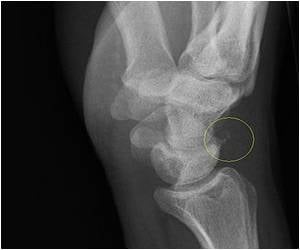Brain waves can be used to type alphanumerical characters on a computer, says a revolutionary study by neuroscientists at the Mayo Clinic campus in Jacksonville, Fla.
Brain waves can be used to type alphanumerical characters on a computer, says a revolutionary study by neuroscientists at the Mayo Clinic campus in Jacksonville, Fla.
The researchers showed that by merely focusing on the "q" in a matrix of letters, for example, "q" appeared on the monitor.Researchers said that the findings represent concrete progress toward a mind-machine interface that may, one day, help people with a variety of disorders, control devices such as prosthetic arms and legs.
These disorders include Lou Gehrig's disease and spinal cord injuries, among many others.
"Over 2 million people in the United States may benefit from assistive devices controlled by a brain-computer interface. This study constitutes a baby step on the road toward that future, but it represents tangible progress in using brain waves to do certain tasks," says the study's lead investigator, neurologist Dr. Jerry Shih.
The study was conducted in two patients with epilepsy. These patients were already being monitored for seizure activity using electrocorticography (ECoG), in which electrodes are placed directly on the surface of the brain to record electrical activity produced by the firing of nerve cells.
This kind of procedure requires a craniotomy, a surgical incision into the skull.
Advertisement
Most studies of mind-machine interaction have occurred with EEG, said Shih.
Advertisement
Because these patients already had ECoG electrodes implanted in their brains to find the area where seizures originated, the researchers could test their fledgling brain-computer interface.
In the study, the two patients sat in front of a monitor that was hooked to a computer running the researchers' software, which was designed to interpret electrical signals coming from the electrodes.
The patients were asked to look at the screen, which contained a 6-by-6 matrix with a single alphanumeric character inside each square. Every time the square with a certain letter flashed, and the patient focused on it, the computer recorded the brain's response to the flashing letter.
The patients were then asked to focus on specific letters, and the computer software recorded the information.
The computer then calibrated the system with the individual patient's specific brain wave, and when the patient then focused on a letter, the letter appeared on the screen.
"We were able to consistently predict the desired letters for our patients at or near 100 percent accuracy. While this is comparable to other researchers' results with EEGs, this approach is more localized and can potentially provide a faster communication rate. Our goal is to find a way to effectively and consistently use a patient's brain waves to perform certain tasks," said Shih.
The study was presented at the 2009 annual meeting of the American Epilepsy Society.
Source-ANI
TRI













